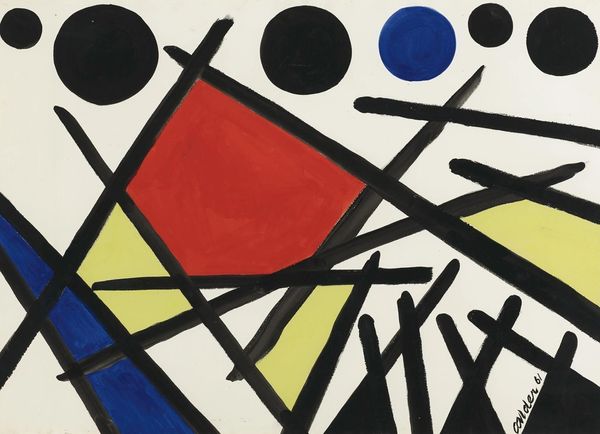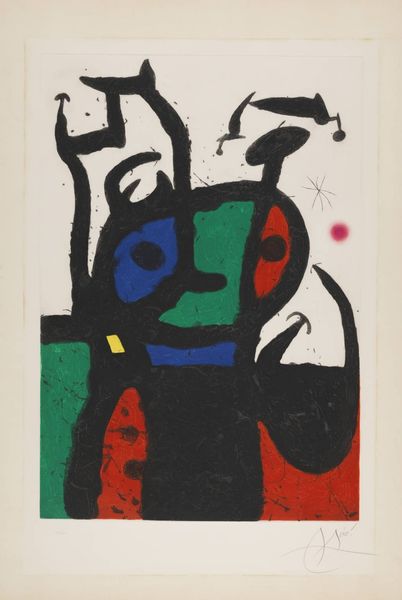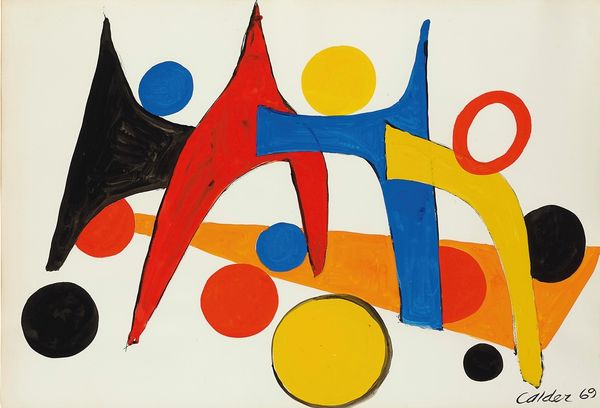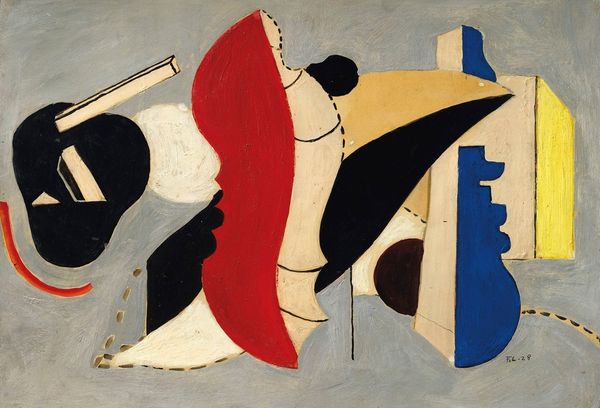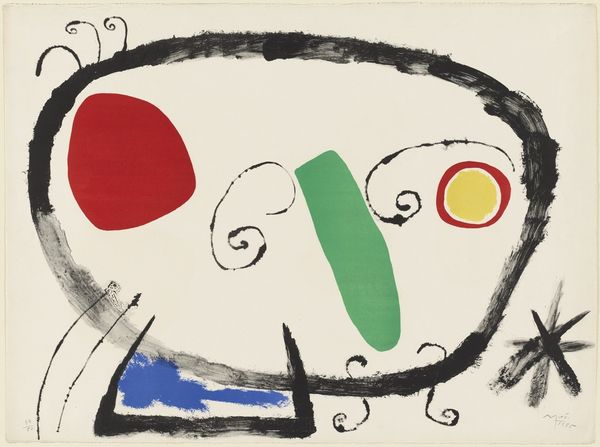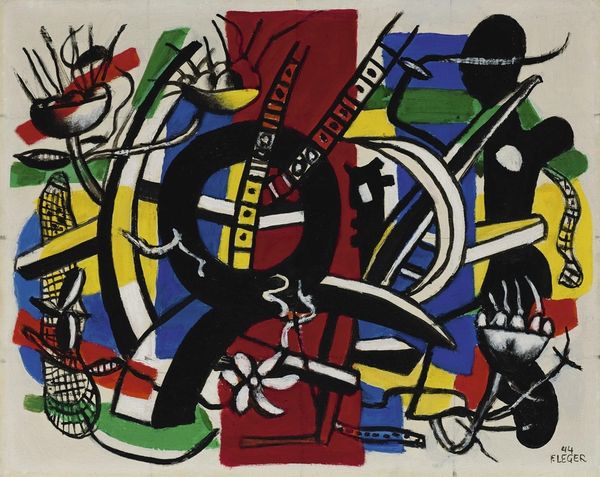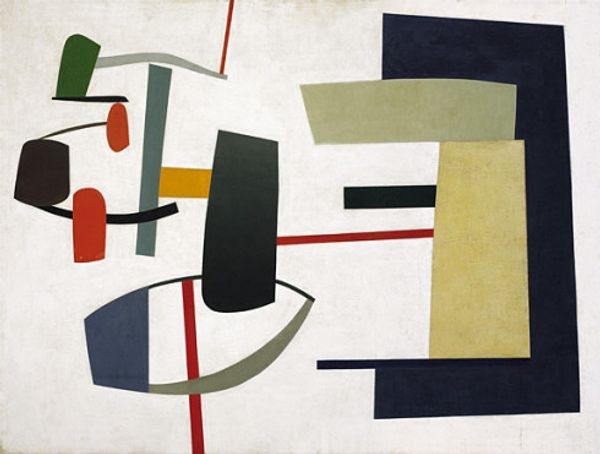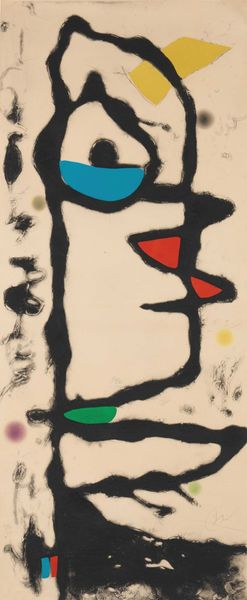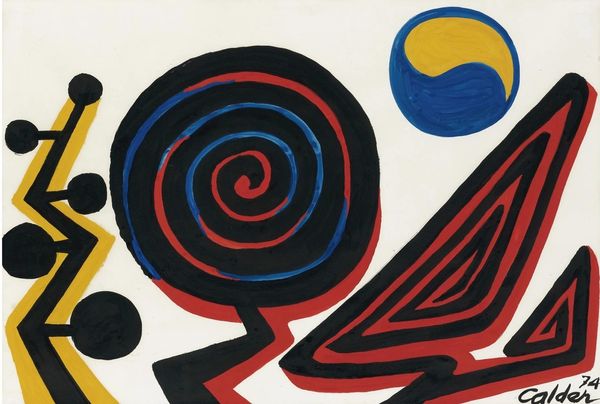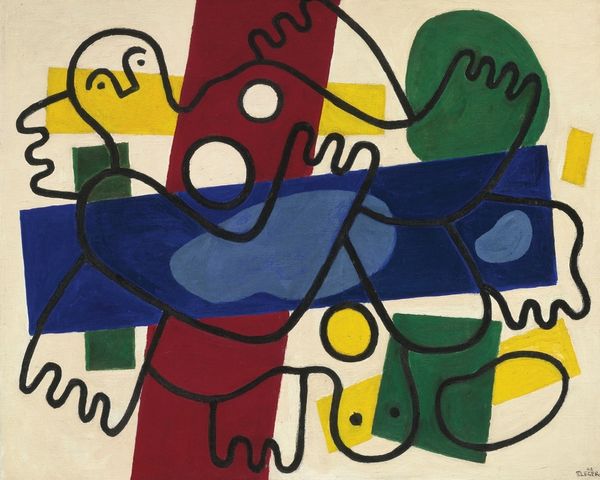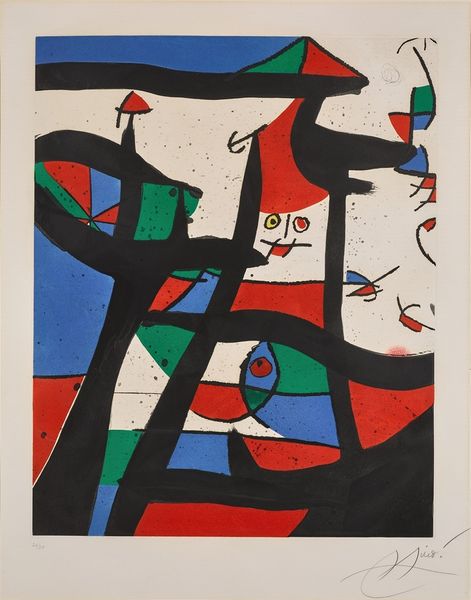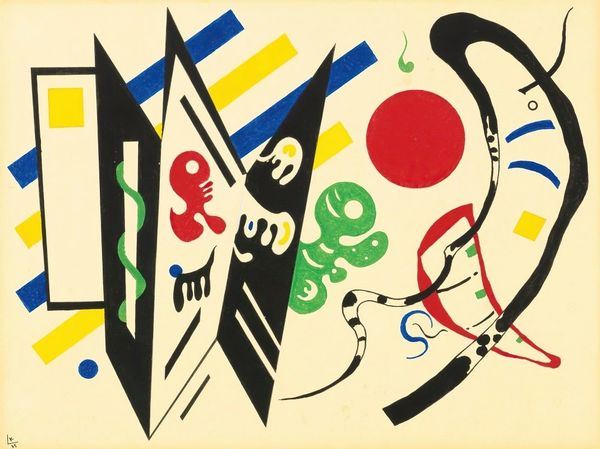
painting, acrylic-paint
#
popart
#
painting
#
pop art
#
acrylic-paint
#
abstract
#
geometric
#
abstraction
#
surrealism
#
modernism
Copyright: Modern Artists: Artvee
Curator: Joan Miró's "Femme à la voix de rossignol dans la nuit," created in 1971. It's acrylic on canvas. Editor: Striking! The contrast is so immediate: bold color blocking against stark black lines. A little unsettling, almost playful in its discord. Curator: Playful is a good word. But consider that 1971—the cultural landscape, the aftermath of '68, global tensions. These bright, almost childlike shapes emerge from, and are bordered by, zones of solid black, of stark contrasts that create the image of something like a woman figure. How can we relate that back to its process and even its role in the broader market for art? Editor: Indeed. The large swathes of flat color, contained by these confident, almost careless lines, it's pure visual syntax. Look at the interaction between the orange circle and the black curves in the upper left corner... the composition compels us to see these shapes first, and the story is second. What does that mean when we talk about the language of his paintings? Curator: It signifies a break from conventional representation. But for whom? He pulls colors and shapes from popular imagery but distills them into something…unsettling, the question becomes how can we see it, not just for its abstract value, but for its function as commodity in a world hungry for revolutionary aesthetics, one now well integrated into the mechanisms of culture and capital. How did it come to be seen as simply "Pop Art" over the work it demands that its patrons really do? Editor: It's undeniably modern, almost aggressively so. The material reality is right here, the pure pigment. No depth to these forms, they press against the surface. The large red figure—so dominant it's hard to escape! Curator: Almost a scream in the middle. Yes and acrylic enables that flatness, that immediacy, divorcing painting further from traditional skill or rendering. Making the image and the subject much more reproducible, and accessible. The scream then being bought to you cheaper than it takes to feed and house you. What a horrifying scream is that! Editor: We've come back around to our first impressions again! Curator: But more deeply attuned to the materials, process, and historical-social forces. Editor: And I see its raw vitality, laid bare. What could be better?
Comments
No comments
Be the first to comment and join the conversation on the ultimate creative platform.
